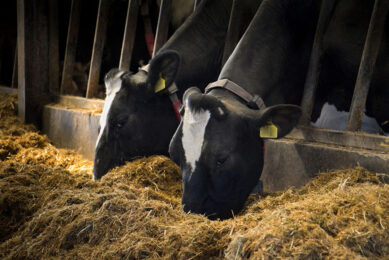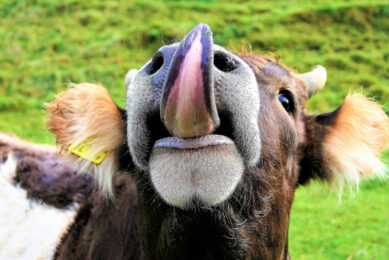A guide to fine tuning a diet formulation

It is obvious that if commodity prices and qualities remain stable in combination with never changing nutritional needs of animals, a fixed diet formula could be sufficient. But we all know, this is not practice. Market prices are unsteady and new insights on animal requirement differ around the world. How can we deal with this effectively?
If we would all stick with the fixed formulas, supplying the feed producers with commodities would be easy as pie. Unfortunately this is not the case. One of the main reasons to use a formulation tool is therefore to help raw material purchasers make good and solid decisions.
Multi-formulation programme
The key tool to optimise purchases is using a multi-formulation programme. The idea behind this is to optimise all the feed formulas, while taking their production tonnages into consideration. This method is more advanced than single optimisation which can’t help you with the commodities purchase. Another possibility is to measure raw material consumption once optimised for every single formula one by one. From the consumption data, the purchaser can reconsider the quantities that have to be purchased and hence reduce costs. This method is not responsive and can’t allow you to make any simulations. In addition, the presence of formulas produced in very low quantities or fixed formulas complicates the problem.
Optimisation using market price incentives
In practice, it is seen that purchasers follow market prices for certain raw materials and commodities and sometimes buy more than needed, just because the prices are favourable. An often heard argument: “I optimise the quantities bought using the cost price and the quantities to buy using the market price.” In addition, 2 scenarios need to be taken into account.
- Purchases have already been done, depicting an expense done, fixed and for which there is nothing more to optimise: mathematically said it is a constant. Or
- you have remaining purchases. These are the adjusting variable to make a least-cost formulation.
Therefore, the calculation of the cost price of a feed formulation will be done taking into consideration the purchases already done.
Good deal not always reflected in selling price
What is the consequence of this optimisation feed rations using the market price, taking into consideration the case that we purchased a raw material at a “good price”? In other words, the price of this particular raw material increased since we placed the order. Figure 1 shows that with the optimisation using the market price, the raw material is often less used than raw materials that are used for creating a least-cost diet. The risks of having leftovers of this “cheap bought” raw material is therefore bigger. This in turn can lead to more losses and less profit than expected (lower selling price of the feed to clients).
Figure 1 – Comparison of formulating using the cost price (green line) or market price (orange line). The figure shows that if using the market price, less volume of this raw material is used in the end.
Simulation to test the hypothesis
Multi-formulation will provide you with information on the raw material consumptions. Then it will be possible to set some constraints on one or several raw material consumptions. However, the programme used will always inform you on the cost coming from all the modifications: indeed a solution without stock constraints would be ideal because less costly. At first, the multi formulation can be used to make some simulation, in order to test hypothesis and help purchasers to take right decisions. To do so, a multi-formulation parametric allowing to quickly simulating one or several variations is mandatory. The following simulation should be quickly done:
- Consequences on the variation of a raw material quality (what happen if the Soya 48 has of protein level of only 46.5%?)
- Consequences linked to the purchase of an additional 25.5 tonnes of a specific raw material
- Consequences linked to the variation of a price of one or several raw materials.
- Study of the interest of a new raw material (at what price will it be interesting to buy and in which quantities?)
- Study of the reselling of one or several raw materials, etc.
Then the multi-formulation has an operational role, when it allows optimally allocating the available raw materials, in case of shortage. In this more operational situation it is required to modify formulas one by one in the case of a multi-formulation. The working method could be the following:
- Multi-formulation of the production, without any supply constraints.
- Then set the available quantities
- Product managers can then review and adjust the formulas taking into consideration the availabilities.
The Allix range
A multi-formulation programme is necessary as it enables a feed producer to optimise the whole production, because it provides a clear and comprehensive view of all the raw material purchases. It gives the feed producer the possibility to adapt the formulas to your stocks finding the cheapest raw material allocation. The French company A-Systems has developed the feed formulation software Allix for feed producers, petfood producers, premixers and consultants among others ; each user having a suitable Allix package. When the Allix multi-formulation package helps professionals to optimise with the market price, the Optiflow package can even consider a full model representing raw material flows in a feed mill, that is to say the closest as possible to reality. It enables the raw material purchaser as well as the nutritionist to make decisions according to real life and make high savings.












